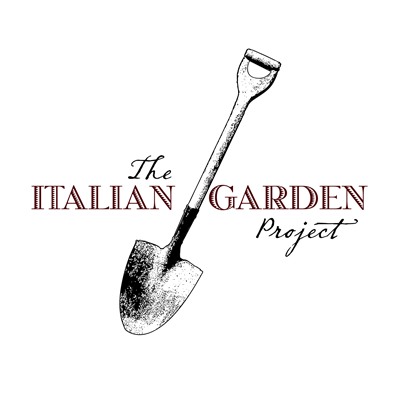Braiding Onions and Garlic
Nothing says old school Italian garden like a strand of braided garlic or onions. They have that wonderfully rustic, yet artistic look. For the Italian gardener, braiding is probably not done for the artistic quality as much as the simple, utilitarian purpose of a space saving, practical way to dry and to prepare garlic or onions for long term storage. But now we see strands of garlic and onions braided for their decorative appeal. I’ve even seen our local supermarket sell them to be given as gifts. But to an Italian gardener, braiding strands is just what you do after harvesting, at least with most varieties of onions and soft neck garlic.
There are two kinds of garlic, soft neck and hard neck. Hard neck can be dried and hung as well, but usually in small bundles, with the stiff stems cut off at about 8 inches. This photo shows some hanging in a shed in the Brooklyn garden of Luigi Fuccio.
I ask just about every gardener I visit what they do with their garlic or onions after harvesting. Sometimes they are not sure of the English word for braiding so instead make the hand motions of braiding and say “like hair” and then say the Italian word treccia meaning “a braid”.
I’m thrilled if there happen to be freshly braided strands hanging near the garden to photograph. I’m even happier if I’m lucky enough to be visiting when the onions or garlic have dried in the ground or have dried just enough after harvesting to be ready for braiding and a gardener offers to demonstrate.
Giovanni Macchione graciously offered to braid the garlic that was drying near his chicken coop during a July visit for the Smithsonian documentation project.
I hit the jackpot when I was visiting Teresa Tarantino in the Bronx near the end of July and she happened to have dozens of onions in her garden ready to be harvested and at the perfect stage of dryness to be braided.
She immediately proceeded to pull them from the ground and expertly bundle them. Fortunately we were able to capture all of this in the video below. Notice how skillfully and confidently she handles them. She makes the braiding look so easy. Well, it’s not. It takes lots of practice. She knows exactly when to add more and depending on how long and firm the leaves, how many to add at once. Don’t let those beautifully manicured hands fool you. She is the sole gardener of an immense garden with a grape arbor, fig trees and rows and rows of vegetables.
Garlic should be planted in the fall in cooler climates. You can plant onions in the early spring because they are very cold hardy. Tommasina told me she plants hers in mid-March and said any time until the middle of April is okay. She plants onion sets, but onions can also be planted from seed or transplants. Onion seeds can also be planted directly in the garden in cooler climates as soon as the soil can be worked, or can be started indoors about three months before the last frost date. They can be grown inside for two months and then transplanted outside about a month before the last frost.



